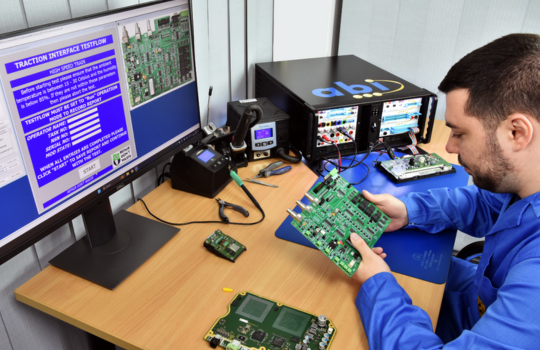“Repair generates 85% fewer emissions compared to sourcing a new electronic circuit board”.
Source PSA Group
Championing the sustainability and cost-effectiveness of repair over replacement.




A technician or engineer armed with the right diagnostic tools and training can diagnose the issue, replace the broken down and generally inexpensive components and save other components in the device from being dumped along with the circuit board.

“Repair generates 85% fewer emissions compared to sourcing a new electronic circuit board”.
Source PSA Group
Investments in training and the right diagnostic technologies can turn local teams into repair heroes, capable of testing, maintaining, and repairing electronics in-house. Costs can be reduced by up to 90% when executed close to the point of use, compared to sourcing replacement parts from the original equipment manufacturer (OEM).
Local repair setups require a modest investment in equipment, training, and infrastructure. Most businesses that are part of the ‘Repair, don’t waste’ movement recover the investment in 6 to 12 months, sometimes much sooner and with the first few repairs and the mitigation of obsolescence.
Repair Vs Buy New reduces emissions by 85%. The U.N estimates that the world will produce 57 million tonnes of E-waste this year. This waste is valued at 55 billion dollars in materials only. In-house repair and e-waste reduction add huge value to businesses committed to energy transition and net-zero policies.

I am a firm believer that real sustainability is not only achieved by producing energy with renewable means but also by extending the life cycle of the very components that generate that green electricity!

Repairing is investing in a greener future for our children. With the right equipment and training, you can repair anything.

I believe more than 95% of faulty boards can be repaired. Easily!
It is worth the effort when you take into consideration the rising costs of materials and extensive lead times.

I am pleased with the BoardMaster acquisition by VLT. It’s a fantastic, exceptionally versatile tool. A great ally to diagnose faults in electronic boards with precision.

Repairing electronic boards, complex or simple, will always be cheaper than buying a new one. It greatly reduces downtime too if you have the right tool for the job.

The losses from just one hour of any machine that is not in operation are a huge deal. Having the means to diagnose and repair it locally is key in times of component shortage and supply chain issues.



















| Cookie | Duration | Description |
|---|---|---|
| cookielawinfo-checkbox-analytics | 11 months | This cookie is set by GDPR Cookie Consent plugin. The cookie is used to store the user consent for the cookies in the category "Analytics". |
| cookielawinfo-checkbox-functional | 11 months | The cookie is set by GDPR cookie consent to record the user consent for the cookies in the category "Functional". |
| cookielawinfo-checkbox-necessary | 11 months | This cookie is set by GDPR Cookie Consent plugin. The cookies is used to store the user consent for the cookies in the category "Necessary". |
| cookielawinfo-checkbox-others | 11 months | This cookie is set by GDPR Cookie Consent plugin. The cookie is used to store the user consent for the cookies in the category "Other. |
| cookielawinfo-checkbox-performance | 11 months | This cookie is set by GDPR Cookie Consent plugin. The cookie is used to store the user consent for the cookies in the category "Performance". |
| viewed_cookie_policy | 11 months | The cookie is set by the GDPR Cookie Consent plugin and is used to store whether or not user has consented to the use of cookies. It does not store any personal data. |